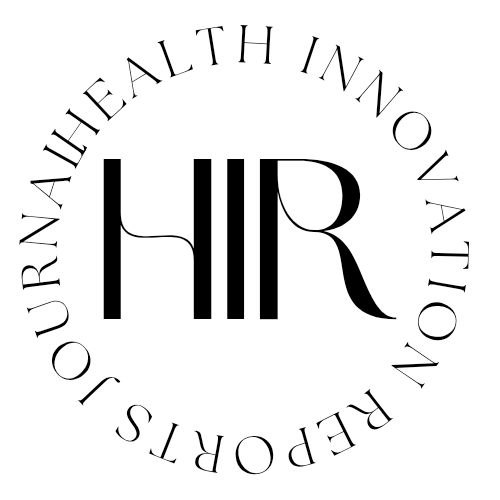Evergreen Plants in Medicine: A Narrative Review of Their Therapeutic Potential and Pharmacological Applications
DOI:
https://doi.org/10.64048/tx199w96Keywords:
Evergreen Plants, Phytotherapy, Medicinal Plants, Traditional Medicine, Pharmacological PropertiesAbstract
Evergreen plants, known for retaining their foliage throughout the year, play an essential ecological and medicinal role across diverse environments. Traditionally valued in various healing systems, these plants offer year-round accessibility and are rich in pharmacologically active compounds. This review aims to provide a comprehensive overview of the botanical characteristics, phytochemical profiles, ethnobotanical uses, and pharmacological mechanisms of evergreen plants, while highlighting their clinical applications and research limitations. Evergreen species such as Taxus brevifolia, Camellia sinensis, and Ilex paraguariensis have demonstrated significant therapeutic benefits, including anti-inflammatory, anticancer, antimicrobial, and antioxidant activities. These properties are largely attributed to bioactive compounds like terpenoids, flavonoids, and polyphenols, which interact with molecular pathways relevant to chronic and infectious diseases. Despite these promising attributes, current research is hindered by challenges such as inconsistent extraction methods, limited clinical trials, and threats to biodiversity due to overharvesting. This review highlights the need for standardized, interdisciplinary research approaches and sustainable practices to fully realize the medicinal potential of evergreen plants. It is recommended that future studies prioritize clinical validation, conservation, and integration of traditional knowledge into evidence-based frameworks.
Downloads
References
ALAMGIR, A. & ALAMGIR, A. 2018. Secondary metabolites: Secondary metabolic products consisting of C and H; C, H, and O; N, S, and P elements; and O/N heterocycles. Therapeutic use of medicinal plants and their extracts: volume 2: phytochemistry and bioactive compounds, 165-309. https://doi.org/10.1007/978-3-319-92387-1_3
ALASVAND ZARASVAND, S., OGAWA, S., NESTOR, B., BRIDGES, W. & HALEY-ZITLIN, V. 2025. Effects of Herbal Tea (Non–Camellia sinensis) on Glucose Homeostasis and Serum Lipids in Type 2 Diabetes Mellitus: A Systematic Review and Meta-Analysis. Nutrition Reviews, 83, e1128-e1145. https://doi.org/10.1093/nutrit/nuae068
ANAND, U., TUDU, C. K., NANDY, S., SUNITA, K., TRIPATHI, V., LOAKE, G. J., DEY, A. & PROĆKÓW, J. 2022. Ethnodermatological use of medicinal plants in India: From ayurvedic formulations to clinical perspectives–A review. Journal of ethnopharmacology, 284, 114744. https://doi.org/10.1016/j.jep.2021.114744
ASHRAF, M. V., KHAN, S., MISRI, S., GAIRA, K. S., RAWAT, S., RAWAT, B., KHAN, M. H., SHAH, A. A., ASGHER, M. & AHMAD, S. 2024. High-altitude medicinal plants as promising source of phytochemical antioxidants to combat lifestyle-associated oxidative stress-induced disorders. Pharmaceuticals, 17, 975. https://doi.org/10.3390/ph17080975
BALICK, M. J. & COX, P. A. 2020. Plants, people, and culture: the science of ethnobotany, Garland Science. https://doi.org/10.1201/9781003049074
BEYENE, B., BEYENE, B. & DERIBE, H. 2016. Review on application and management of medicinal plants for the livelihood of the local community. Journal of Resources Development and Management, 22, 33-39.
BHARDWAJ, K., ISLAM, M. T., JAYASENA, V., SHARMA, B., SHARMA, S., SHARMA, P., KUČA, K. & BHARDWAJ, P. 2020. Review on essential oils, chemical composition, extraction, and utilization of some conifers in Northwestern Himalayas. Phytotherapy Research, 34, 2889-2910. https://doi.org/10.1002/ptr.6736
BOURAIS, I., ELMARRKECHY, S., TAHA, D., MOURABIT, Y., BOUYAHYA, A., EL YADINI, M., MACHICH, O., EL HAJJAJI, S., EL BOURY, H. & DAKKA, N. 2023. A review on medicinal uses, nutritional value, and antimicrobial, antioxidant, anti-inflammatory, antidiabetic, and anticancer potential related to bioactive compounds of J. regia. Food Reviews International, 39, 6199-6249. https://doi.org/10.1080/87559129.2022.2094401
CHENG, G., YAN, Y., ZHENG, B. & YAN, D. 2024. The Applications of Plant Polyphenols: Implications for the Development and Biotechnological Utilization of Ilex Species. Plants, 13, 3271. https://doi.org/10.3390/plants13233271
CUEVAS-CIANCA, S. I., ROMERO-CASTILLO, C., GÁLVEZ-ROMERO, J. L., JUÁREZ, Z. N. & HERNÁNDEZ, L. R. 2023. Antioxidant and anti-inflammatory compounds from edible plants with anti-cancer activity and their potential use as drugs. Molecules, 28, 1488. https://doi.org/10.3390/molecules28031488
DREISS, L. M. & VOLIN, J. C. 2020. Forests: temperate evergreen and deciduous. Terrestrial Ecosystems and Biodiversity. CRC Press. https://doi.org/10.1201/9780429445651-28
ESMAEALZADEH, N., IRANPANAH, A., SARRIS, J. & RAHIMI, R. 2022. A literature review of the studies concerning selected plant-derived adaptogens and their general function in body with a focus on animal studies. Phytomedicine, 105, 154354. https://doi.org/10.1016/j.phymed.2022.154354
GERBER, T., NUNES, A., MOREIRA, B. R. & MARASCHIN, M. 2023. Yerba mate (Ilex paraguariensis A. St.‐Hil.) for new therapeutic and nutraceutical interventions: a review of patents issued in the last 20 years (2000–2020). Phytotherapy Research, 37, 527-548. https://doi.org/10.1002/ptr.7632
GIVNISH, T. J. 2002. Adaptive significance of evergreen vs. deciduous leaves: solving the triple paradox. Silva fennica, 36, 703-743. https://doi.org/10.14214/sf.535
IQBAL, I., WILAIRATANA, P., SAQIB, F., NASIR, B., WAHID, M., LATIF, M. F., IQBAL, A., NAZ, R. & MUBARAK, M. S. 2023. Plant polyphenols and their potential benefits on cardiovascular health: A review. Molecules, 28, 6403. https://doi.org/10.3390/molecules28176403
LUO, B., TONG, Y., LIU, Y., ZHANG, Y., QIN, Y. & HU, R. 2024. Ethnobotanical insights into the traditional food plants of the Baiku Yao community: a study of cultural significance, utilization, and conservation. Journal of Ethnobiology and Ethnomedicine, 20, 52. https://doi.org/10.1186/s13002-024-00691-y
MANDAL, S. K. & RAHAMAN, C. H. 2022. Inventorization and consensus analysis of ethnoveterinary medicinal knowledge among the local people in Eastern India: Perception, cultural significance, and resilience. Frontiers in Pharmacology, 13, 861577. https://doi.org/10.3389/fphar.2022.861577
NEAMAH, M., MAHDI, E., SAMEIR, M., HUSSEIN, S. & SABER, A. 2024. Clustered Regularly Interspaced Short Palindromic Repeat-1 (CRISPR-1) Locus as a Tool for Tracing the Zoonotic History of Salmonella enterica Strains. Cureus, 16. https://doi.org/10.7759/cureus.62050
NWOZO, O. S., EFFIONG, E. M., AJA, P. M. & AWUCHI, C. G. 2023. Antioxidant, phytochemical, and therapeutic properties of medicinal plants: A review. International Journal of Food Properties, 26, 359-388. https://doi.org/10.1080/10942912.2022.2157425
PIRES, R. 2019. An investigation into the underlying cause of Banksia decline in south-western Australia: adaptive hydraulic traits and vulnerability to drought stress.
RATHORE, S., RAJ, Y., DEBNATH, P., KUMAR, M. & KUMAR, R. 2022. Ethnopharmacology, phytochemistry, agrotechnology, and conservation of Inula racemosa Hook f.–A critically endangered medicinal plant of the western Himalaya. Journal of ethnopharmacology, 283, 114613. https://doi.org/10.1016/j.jep.2021.114613
SADOWSKI, K. 2020. Defining conifer oils in aromatherapy. NAHA’s Aromatherapy Journal, 4, 9-14.
SALEEM, A., AKHTAR, M. F., SHARIF, A., AKHTAR, B., SIDDIQUE, R., ASHRAF, G. M., ALGHAMDI, B. S. & ALHARTHY, S. A. 2022. Anticancer, cardio-protective and anti-inflammatory potential of natural-sources-derived phenolic acids. Molecules, 27, 7286. https://doi.org/10.3390/molecules27217286
SINHA, D. 2020. A review on taxanes: an important group of anticancer compound obtained from Taxus sp. Int. J. Pharm. Sci. Res, 11, 1969-1985.
SUN, W. & SHAHRAJABIAN, M. H. 2023. Therapeutic potential of phenolic compounds in medicinal plants—Natural health products for human health. Molecules, 28, 1845. https://doi.org/10.3390/molecules28041845
SWAN, J. 2011. Sacred Places of Japan: Sacred Geography in the vicinity of the cities of Sendai and Nara. Sacred Capes and Pilgrimage Systems. Planet Earth and Cultural Understanding Series, 321-344.
TURNER, N. 2014. Ancient pathways, ancestral knowledge: ethnobotany and ecological wisdom of indigenous peoples of northwestern North America, McGill-Queen's Press-MQUP. https://doi.org/10.1515/9780773585393
VAN VUUREN, R. J., VISAGIE, M. H., THERON, A. E. & JOUBERT, A. M. 2015. Antimitotic drugs in the treatment of cancer. Cancer chemotherapy and pharmacology, 76, 1101-1112. https://doi.org/10.1007/s00280-015-2903-8
VISAN, D.-C., OPREA, E., RADULESCU, V., VOICULESCU, I., BIRIS, I.-A., COTAR, A. I., SAVIUC, C., CHIFIRIUC, M. C. & MARINAS, I. C. 2021. Original contributions to the chemical composition, microbicidal, virulence-arresting and antibiotic-enhancing activity of essential oils from four coniferous species. Pharmaceuticals, 14, 1159. https://doi.org/10.3390/ph14111159
VISHNOI, H., BODLA, R. B., KANT, R. & BODLA, R. 2018. Green Tea (Camellia sinensis) and its antioxidant property: A review. Int J Pharm Sci Res, 9, 1723-36.
YADAV, R., PANDITA, A., PANDITA, D. & MURTHY, K. 2023. Taxus brevifolia (Nutt.) Pilger. Potent Anticancer Medicinal Plants: Secondary Metabolite Profiling, Active Ingredients, and Pharmacological Outcomes, 10. https://doi.org/10.1201/9781003431190
YADAV, V. K., CHOUDHARY, N., HEENA KHAN, S., KHAYAL, A., RAVI, R. K., KUMAR, P., MODI, S. & GNANAMOORTHY, G. 2020. Incense and incense sticks: types, components, origin and their religious beliefs and importance among different religions. J. Bio Innov, 9, 1420-1439. https://doi.org/10.46344/JBINO.2020.v09i06.28
YE, H., LI, C., YE, W., ZENG, F., LIU, F., WANG, F., YE, Y., FU, L. & LI, J. 2021. Medicinal Gymnosperms of Ginkgoaceae, Pinaceae, Cupressaceae, Taxodiaceae, and Podocarpaceae. Common Chinese Materia Medica: Volume 1, 161-182. https://doi.org/10.1007/978-981-16-2062-1_9
ZIDORN, C. 2018. Seasonal variation of natural products in European trees. Phytochemistry Reviews, 17, 923-935. https://doi.org/10.1007/s11101-018-9570-4
Downloads
Published
Data Availability Statement
No datasets were created or analyzed in this work; therefore, data sharing is not relevant.
Issue
Section
License
Copyright (c) 2025 Shilan Farhad Mamand, Jihad Haji Saleh (Author)

This work is licensed under a Creative Commons Attribution 4.0 International License.
All articles published in Health Innovation Reports are licensed under the Creative Commons Attribution 4.0 International License (CC BY 4.0). This means anyone is free to share and adapt the work, provided proper attribution is given to the original authors and source.















